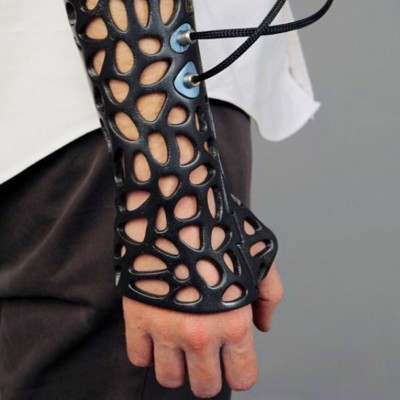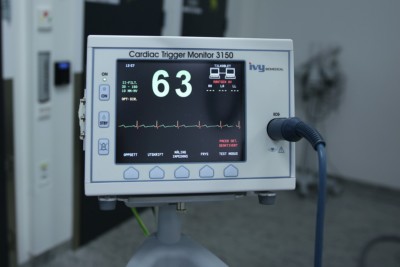Advancements in the medical field have led to more efficient treatment and better overall care for patients. In recent years, 3D printing has contributed to these advancements, emerging as a faster, more cost-effective method to customizing patient care. In this article, we’ll discuss how 3D printing is furthering medical treatment and procedures and what materials are ideal for these applications.
Applications
3D printing can be used for a variety of purposes in the medical industry. This versatility and growing adoption of this manufacturing method is primarily due to how fast and cost-effective it is. The main areas in which 3D printing is used in the medical industry are detailed below:
Medical Device Development
Product development is a primary use of 3D printing across a variety of industries, and the medical device industry is no exception. Engineers developing new devices like heart rate monitors, tablets, and lab equipment can use 3D printing to accelerate their product development process. This is because 3D printing’s additive manufacturing process that builds a part layer by layer without tooling enables shorter lead times and lower costs. This makes 3D printing ideal for rapid prototyping and even low volume end-use part production.
 Personalized Patient Care
Personalized Patient Care
3D printing allows for quick and easy customization of patient care. A 3D printed model of a specific patient’s anatomy can be produced from their MRI scans. This can help doctors prepare for an operation by being able to see, feel, and hold a physical model, making them more confident and efficient once in the OR. The same method may be used to create custom implants, prosthetics, and casts for patients. Customizing these aids helps with patient healing by giving the best support possible based on the patient’s particular anatomy. 3D printing excels in this area because designs can easily be created, adapted, and printed on demand without the expensive investment that traditional manufacturing methods of these same items require. Implants made via 3D printing are particularly progressive because they can be printed with a lattice design that encourages regrowth around and into the implant for more satisfactory results.
Instrumentation
Much in the same way that a 3D model can be altered to fit to a patient’s anatomical needs, the design of tools may also be changed to fit different patient cases and procedures. These tools may include custom sterilizable forceps, scalpels, handles, and more that may be customized and quickly 3D printed. Often, these tools are only used once, meaning that  manufacturing them without 3D printing would be infeasible. Instead, these modified tools can be delivered at a low cost in a short time frame to help doctors assist their patients in a timely manner. Other medical instruments that can be produced this way are custom housings and seals for equipment, tubing, and hoses.
manufacturing them without 3D printing would be infeasible. Instead, these modified tools can be delivered at a low cost in a short time frame to help doctors assist their patients in a timely manner. Other medical instruments that can be produced this way are custom housings and seals for equipment, tubing, and hoses.
Education
Outside of direct patient use, 3D printing can also produce aids for medical students. Manikins and cadavers offer limited training since manikins are only representative of the average patient and cadavers lack live tissue qualities. However, 3D printing offers many materials, which allows the technology to produce models that simulate bone, muscle, cartilage, and tissue. Some materials are also clear to provide better visualization. These model capabilities enable medical students to get more relevant hands-on training, which yields great efficiency at a lower cost for medical programs.
Materials
Several 3D printing materials, including both biocompatible and non-biocompatible materials, are available for medical use. It is important to keep in mind that some materials listed below are not suited for extended contact and their application should be assessed before employing their use.
 Non-Biocompatible Materials
Non-Biocompatible Materials
3D printing most commonly uses various grades of thermoplastics and photopolymers, which are satisfactory for many non-contact applications. These materials are ideal for product development where the part needs to be made quickly and at low cost but doesn’t necessarily require the ability to be sterilized and used in direct treatment.
Metals
Most permanent implants today are made of metal, usually either titanium or stainless steel. These implants are commonly machined, but metal can be 3D printed as well for patient customization. DMLS 3D printers sinter metal powder together to form the part, creating a homogeneous piece that will act as any traditionally manufactured one will.
MED610
MED610 is a photopolymer used with PolyJet 3D printers. It has been approved for varying lengths of temporary body contact, including 30+ days for skin and up to 24 hours for mucosal membrane and bone. It is popular in the medical and dentistry fields because it is clear and allows for visualization of the application site. It is not approved for permanent implantation.
 PC-ISO
PC-ISO
Produced via FDM 3D printers, PC-ISO is a polycarbonate thermoplastic with excellent mechanical properties, including high heat and wear resistance. It has been used to make prototypes, end-use products, molds, and more in the medical industry as well as in pharmaceutical and food packaging. This material is able to be used for permanent implants and has been certified according to both ISO 10993 and USP Class VI.
ABS-M30i
ABS-M30i is another FDM production-grade thermoplastic. It excels in the medical field because it can be sterilized by gamma, hydrogen peroxide gas plasma, and EtO methods. This material is commonly used to produce medical instruments, fixtures, and models. It has received certifications through both ISO 10993 and USP Class VI.
ULTEM 1010
Another FDM thermoplastic worthy of note is ULTEM 1010. This material is capable of enduring steam autoclaving for sterilization due to its excellent thermal stability and heat resistance. It also has high chemical resistance and tensile strength that makes it a good choice for medical, aerospace, and automotive applications. Like both PC-ISO and ABS-M30i, it is certified through ISO 10993 and USP Class VI.
VisiJet M3 Crystal
VisiJet M3 Crystal is a photopolymer used by MultiJet 3D printers. It produces parts that are translucent and durable for various applications requiring visibility. This material is certified according to USP Class VI standards for medical use.
3D Printing at 3 Space
Here at 3 Space, we offer multiple 3D printing services and technologies that can make the medical devices you need. Our engineers are happy to assist with questions or concerns about any of the materials and 3D printing technologies covered in this article. For more information, contact us today.
